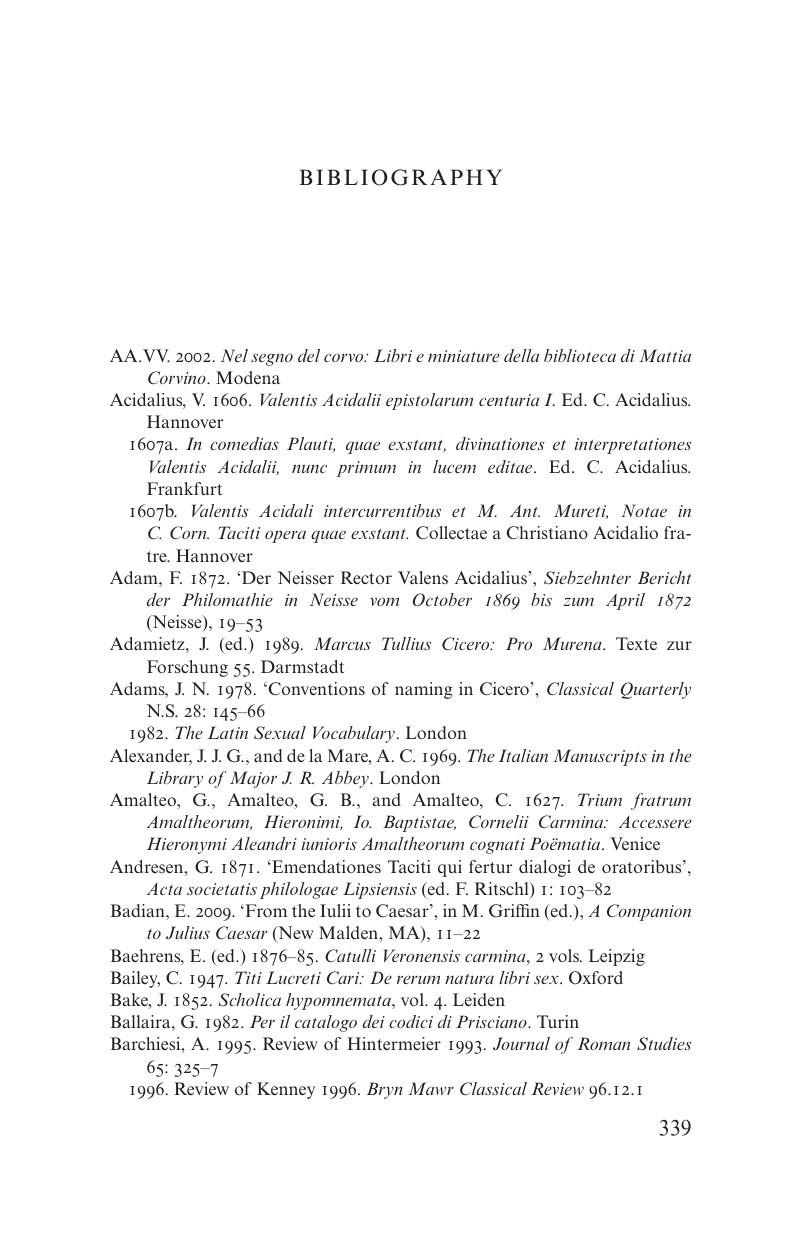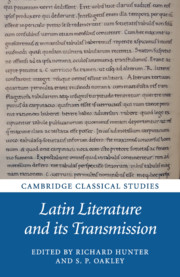Book contents
- Latin Literature and its Transmission
- Frontispiece
- Cambridge Classical Studies
- Latin Literature and its Transmission
- Copyright page
- Contents
- Illustrations
- Contributors
- Preface
- 1 Jupiter the antiquarian
- 2 Neglected and unnoticed additions in the text of three speeches of Cicero (In VerremII.5,Pro Murena,Pro Milone)
- 3 Some problems in the text and transmission ofLucretius
- 4 On the text of theAeneid
- 5 Overlooked manuscript evidence for interpolations in Lucretius?
- 6 Aliquid putare nugas
- 7 Dogs, snakes and heroes
- 8 Authenticity and other textual problems inHeroides16
- 9 Maritime Maro
- 10 Illa domus, illa mihi sedes
- 11 Acidalius on Tacitus
- 12 On the good shipingenium
- 13 Theeditio princepsof Priscian’sPeriegesisand its relatives
- 14 A new critical edition of Horace
- The published writings of Michael Reeve
- Bibliography
- Index of passages discussed
- General index
- References
Bibliography
Published online by Cambridge University Press: 05 December 2015
- Latin Literature and its Transmission
- Frontispiece
- Cambridge Classical Studies
- Latin Literature and its Transmission
- Copyright page
- Contents
- Illustrations
- Contributors
- Preface
- 1 Jupiter the antiquarian
- 2 Neglected and unnoticed additions in the text of three speeches of Cicero (In VerremII.5,Pro Murena,Pro Milone)
- 3 Some problems in the text and transmission ofLucretius
- 4 On the text of theAeneid
- 5 Overlooked manuscript evidence for interpolations in Lucretius?
- 6 Aliquid putare nugas
- 7 Dogs, snakes and heroes
- 8 Authenticity and other textual problems inHeroides16
- 9 Maritime Maro
- 10 Illa domus, illa mihi sedes
- 11 Acidalius on Tacitus
- 12 On the good shipingenium
- 13 Theeditio princepsof Priscian’sPeriegesisand its relatives
- 14 A new critical edition of Horace
- The published writings of Michael Reeve
- Bibliography
- Index of passages discussed
- General index
- References
Summary

- Type
- Chapter
- Information
- Latin Literature and its Transmission , pp. 339 - 362Publisher: Cambridge University PressPrint publication year: 2015



